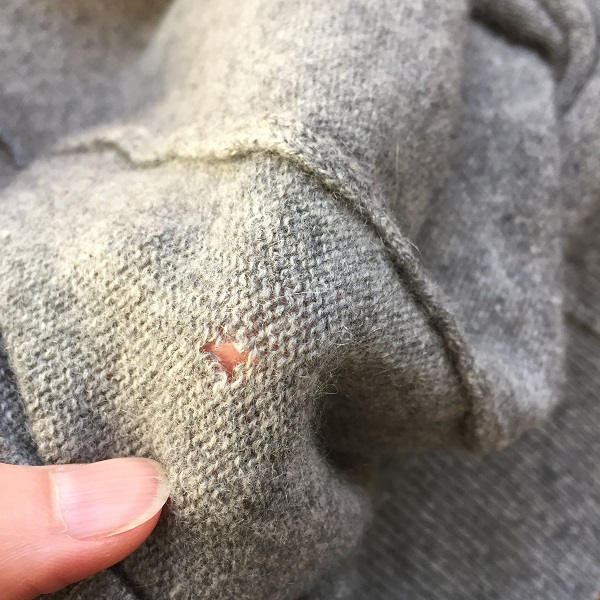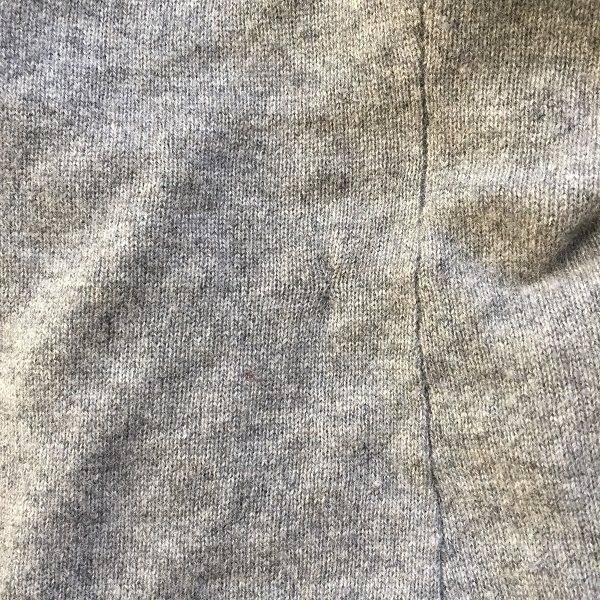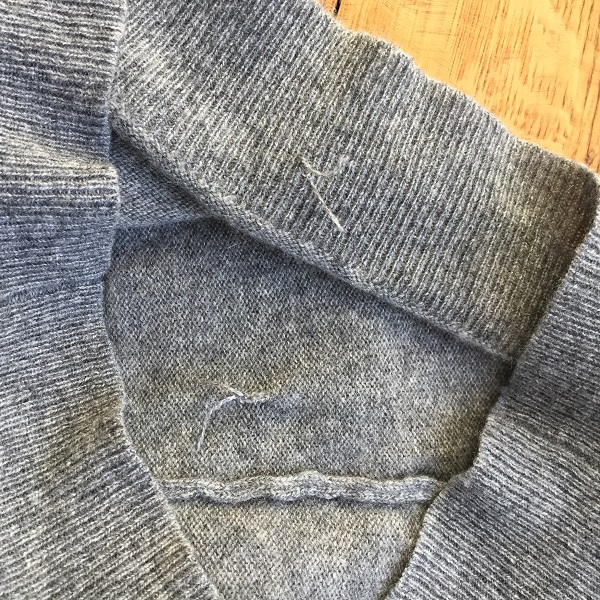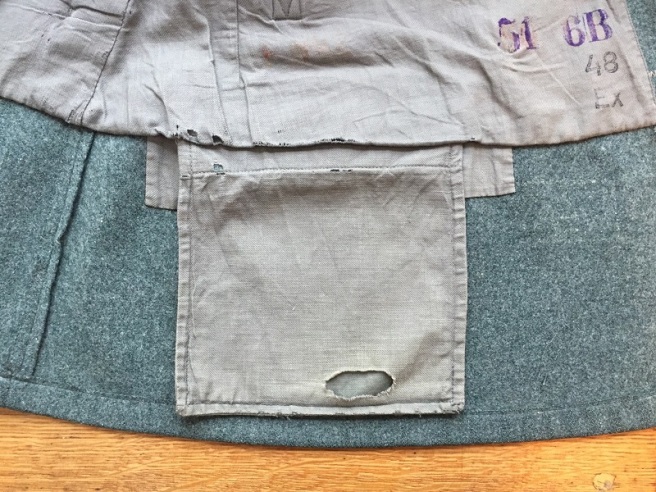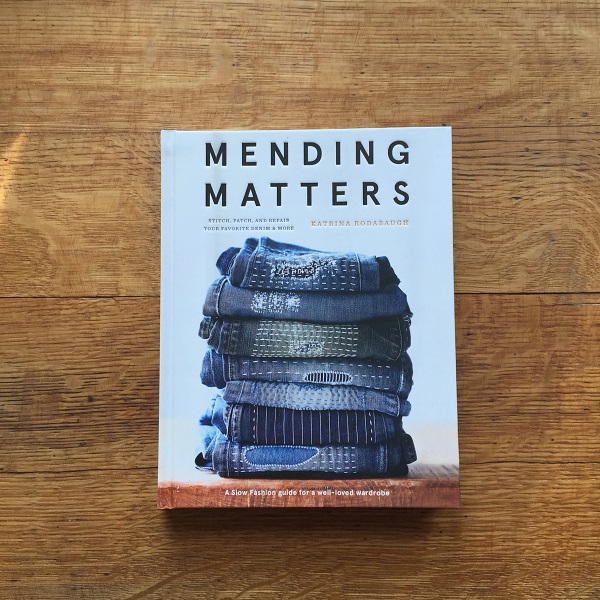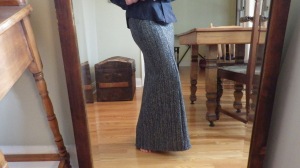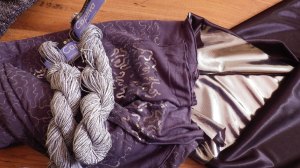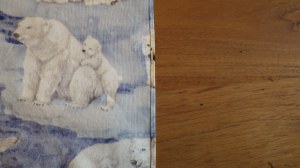The project
Mend small tears in a shirt caused by wear and strain.
Why I chose to mend it when I did
Not long ago, I noticed that this summery linen-cotton shirt of G’s had become damaged and I put it in the mending pile but I wasn’t quite sure what fabric I’d use for the patch. A little while later I was reorganising my sewing stuff and fabric scraps and came across an off-cut from when I shortened this shirt along with the three others G has in the same style. In essence, that eliminated a decision, making the project feel easier.
Then the other day, I was washing those other three shirts and, noting this one’s absence, asked him if he knew where it was. It took a while for me to clue in.
Anyway, it’s perfect weather for this shirt so I figured I should get it back into circulation before the weather turns cool again.
The process

I already had fabric that matched perfectly. Next was to choose the thread. I looked at my collection of heavier threads and embroidery floss and found a white linen as well as a pale blue linen (both actually intended for weaving rather than sewing) that was pretty much a perfect match. (My pointless superpower is always having matching thread.) I preferred the white. It’s “somewhat visibly mended” because I wasn’t trying to make it invisible, but I also didn’t want to make it into a big feature because G prefers low contrast looks.

I rotated the patch so the stripes were perpendicular to the body of the shirt, partly for visual interest and partly because it would look weird to me if the stripes didn’t match up and there’s no way they’d match up. I tacked down the remainder of the patch using running stitches to strengthen the whole area, which was rather worn. (Technique inspired by Mending Matters, discussed here.)
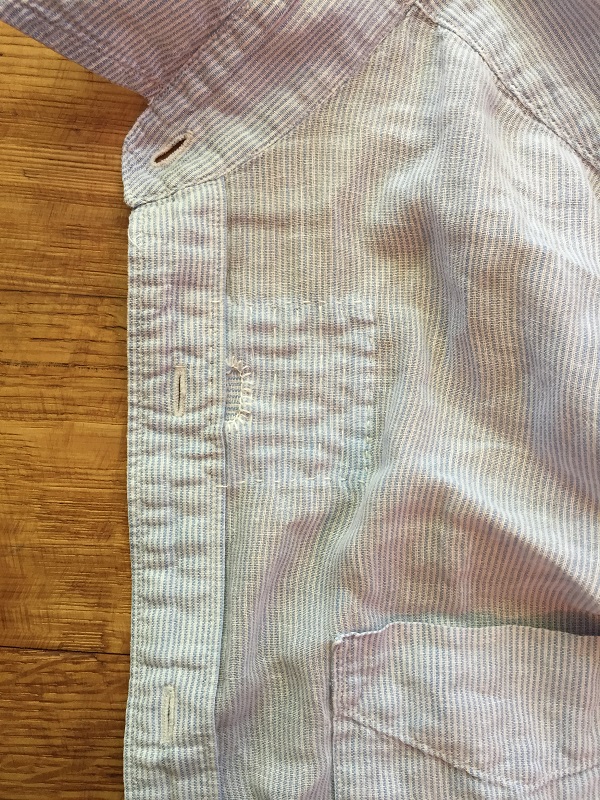
Then, as I was about to toss the shirt into the wash, I noticed the other tear, which I’d known about but forgotten. Damn.
If you want proof as to why it’s a bad idea to stitch down pleats, look no further. The back pleat is supposed to give extra room for movement through the shoulders. Stitch down the pleat, lose that room. Duh. When I originally noticed the tear in this shirt, I immediately ripped out the stitching in the other three. I don’t need to do any more patching than absolutely necessary!

The back patch was very similar to the front patch except for the placement: the front patch location was informed by the presence of the placket, while the back patch needed to relate to the (now-released) pleat. The back patch is virtually centred on the hole. It didn’t seem necessary to tack down this patch, not least because the source of the strain had been removed.

I glued this patch in place with a glue stick rather than pinning.

As it happens, I discovered this article yesterday via FB: The life changing magic of making do. “[G]etting mileage from our things should at least engender a sense of pride, and of mastery,” and for me it definitely does. Odd as it seems, it takes effort and skill to completely use something up, and I enjoy that sense of accomplishment.


